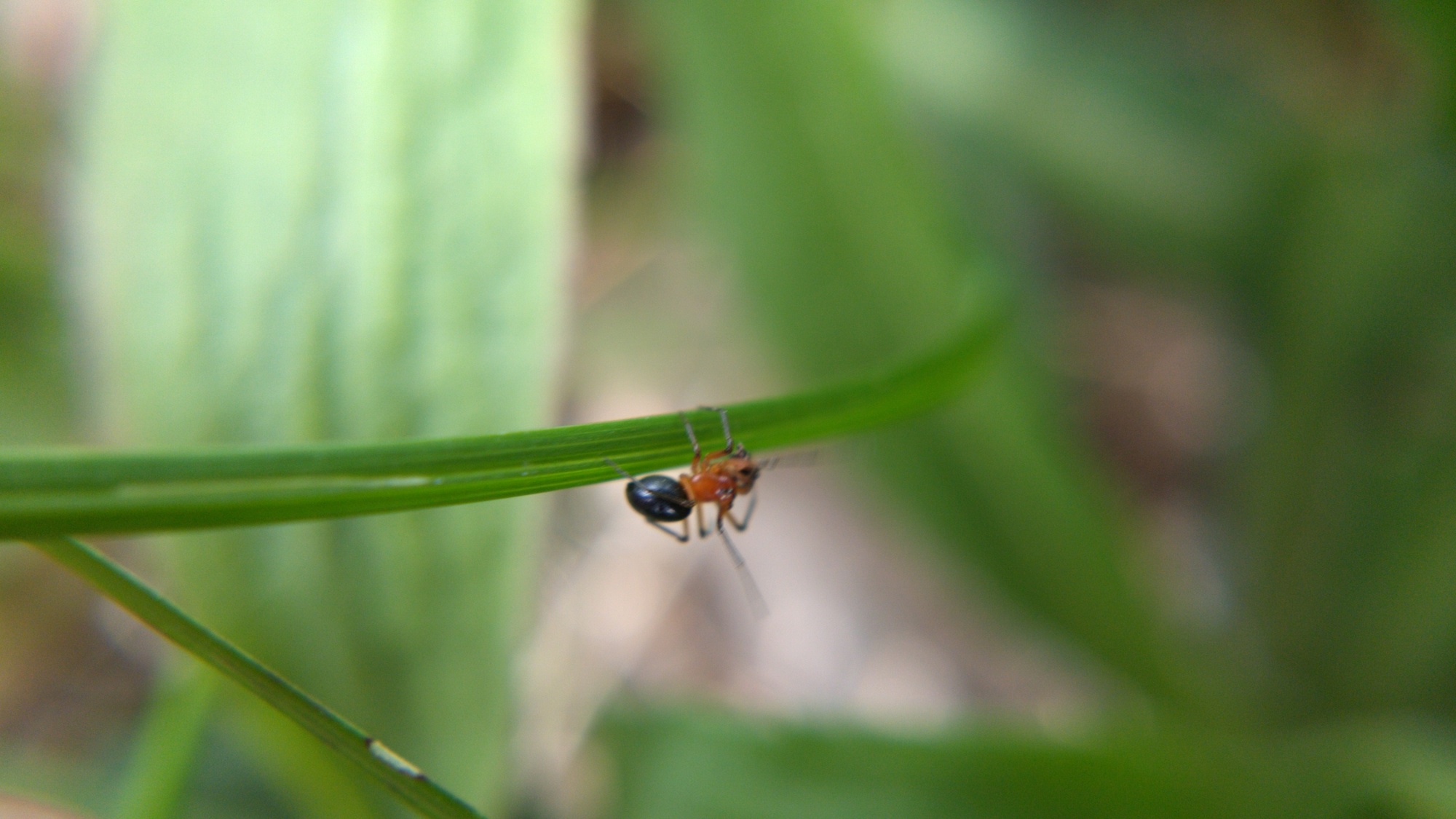In early May, jealous of all the UK people posting their Pardosa observations, I headed to Humber Bay Shores Park early one morning to see if our native Ontario wolf spiders were out yet. They were not. However, I did find lots of other arthropods! A couple of second-timers—almost as exciting as first-timers.
I left the house at around 8 or so, which is early for me.
Trudging along the trail, I saw a flash of red in a low patch of goldenrod. It was a male Hypselistes florens, a spider from the sheet-web weaver family. Very exciting, because I’ve only seen this species once before, and it had been a female.
While poking around, I saw a yellow glint—a juvenile Theridula emertoni, another species I only found for the first time last year. Looking around in similar patches of vegetation revealed more of these tiny jewels.
The jetties along the shoreline are made from giant blocks of limestone, a chalky stone made up of tonnes and tonnes of marine fossils.
The rocks were also home to tiny red mites—long-legged velvet mites or red velvet mites, maybe.
Tiny mesh-web weavers (family Dictynidae) had webbed up little holes in the rock. I watched one attempt to drag in a midge that had gotten entangled in her cribellate silk, but it wriggled free.
For years there’s been a colony of acrobat ants (Crematogaster) in a particular rock. When I checked it, ants were trickling out, sluggish from the cold.
By 10:30 or so, the Martin Goodman Trail was getting more crowded, so I decided to head home. I was about to leave when I saw one last spider—a large Larinioides orbweaver, almost hidden in a cranny in the rock under a thin veil of silk.



















